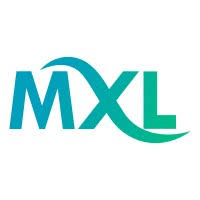
Robinjasper1109
Uploaded on Aug 7, 2025
In today's corporate world, two powerful forces are reshaping business strategy: the urgent need for continuous upskilling and the critical imperative of sustainability. For too long, these two concepts were treated as separate concerns. However, modern Learning and Development (L&D) professionals are now discovering that they can address both challenges with a single, innovative approach: microlearning. By its very design, microlearning is not only an incredibly effective and efficient training methodology but also a remarkably sustainable one, making it a truly modern training solution for an era of environmental and economic consciousness. The traditional training model—with its lengthy workshops, extensive travel, and reams of printed materials—is inherently unsustainable. It demands significant time, energy, and resources, often for knowledge that is quickly forgotten. Microlearning offers a powerful alternative. It delivers learning content in small, highly focused, and easily digestible units, each designed to achieve a single learning objective. This fundamental shift from a rigid, event-based model to a dynamic, on-demand one is what makes microlearning an ideal partner for sustainability. The Triple-Bottom-Line of Microlearning: People, Planet, and Profit The impact of microlearning on sustainability can be viewed through the lens of the triple bottom line, demonstrating its benefits for people, the planet, and a company’s financial health. People: A Sustainable Approach to Human Capital Microlearning is a sustainable solution for a company's most important asset—its people. By delivering knowledge in small, accessible bursts, it respects an employee's time and attention span, leading to higher engagement and better knowledge retention. When delivered through an intelligent Microlearning Platform, training becomes a seamless part of the daily workflow, not a disruptive event. This continuous flow of information, supported by a mobile-friendly microlearning application, ensures that employees are always up-to-date and ready to face new challenges. Consider the diverse needs of different industries. For a company in the Pharma sector, where new research and drug protocols are constantly emerging, microlearning allows for the rapid dissemination of critical information without overwhelming staff. In Banking, as new regulations and anti-fraud protocols are introduced, a series of brief microlearning courses ensures compliance training is delivered efficiently and effectively, reducing risk and stress on employees. Planet: A Greener Way to Learn Microlearning's impact on the environment is both direct and significant. By reducing the need for in-person training, it dramatically lowers a company's carbon footprint. The costs and emissions associated with employee travel, venue rentals, and the printing of physical materials are virtually eliminated. Furthermore, the digital-first nature of microlearning, powered by robust microlearning software, reduces waste in every aspect of the training process. Instead of printing heavy training manuals for a team in Mining or a new safety protocol in Oil and Gas, the content is created once using an efficient AI-powered authoring tool and is then distributed digitally to thousands of employees. This not only saves paper but also allows for instant updates, ensuring that safety and operational information is always current and reliable without having to reprint materials. Profit: A Financially Sustainable Strategy From a financial perspective, microlearning is a highly sustainable investment. Traditional training models are often costly and their ROI is difficult to prove. Microlearning, by contrast, provides a cost-effective and highly measurable solution. A powerful Microlearning LMS (Learning Management System) is the engine that drives this financial sustainability. It provides L&D teams with the deep analytics needed to track not just completion rates but also the direct impact of training on key business performance indicators. For an Insurance company, this means being able to correlate a reduction in claims processing errors with the completion of specific micro-modules. In Retail, it means being able to link an increase in a new product’s sales to the effective training delivered via a mobile Microlearning Application. An integrated AI-Powered Learning Platform further optimizes this, ensuring training is personalized and hyper-efficient, reducing wasted resources on irrelevant content. A Holistic Ecosystem of Tools for a Sustainable Future The success of microlearning in meeting both business and sustainability goals is powered by a holistic ecosystem of microlearning tools. From intuitive microlearning authoring tools that allow for rapid content creation to the dynamic delivery provided by multiple microlearning platforms, every component is designed for efficiency and impact. This approach not only builds a more agile and knowledgeable workforce but also does so in a way that is mindful of the planet and the bottom line. By embracing microlearning, industries across the board—from Finance to Health care—are building a learning culture that is not just modern, but sustainable for the long haul. They are proving that effective training can be achieved without sacrificing environmental responsibility or financial prudence. In an era where businesses are being asked to do more with less, microlearning offers a powerful, proven path forward. It is the training solution for a world that demands intelligence, efficiency, and a commitment to a sustainable future.

Comments